List of heads of state of South Africa
| This article is part of a series on the |
| Politics of South Africa |
|---|
 |
|
|
This is a list of the heads of state of South Africa from the foundation of the Union of South Africa in 1910 to the present day.
From 1910 to 1961 the head of state under the South Africa Act 1909 was the Monarch, who was the same person as the Monarch of the United Kingdom and of the other Dominions/Commonwealth realms. The Monarch was represented in South Africa by a Governor-General. South Africa became a republic under the Constitution of 1961 and the Monarch and Governor-General were replaced by a ceremonial State President. In 1984, under the Tricameral Constitution, the State President gained executive powers, becoming head of both state and government. Since 1994, under the Interim Constitution and the current Constitution, the head of state and government has been called the President.
Monarchs (1910–1961)
[edit]The succession to the throne of South Africa was the same as the succession to the British throne. During the Abdication Crisis the South African parliament passed its own act, "His Majesty King Edward the Eighth's Abdication Act, 1937", to ratify the abdication of Edward VIII.
| No. | Portrait | Name (Birth–Death) |
Reign | Royal House | Prime Minister | ||
|---|---|---|---|---|---|---|---|
| Reign start | Reign end | Duration | |||||
| 1 | 
|
King George V (1865–1936) |
31 May 1910 | 20 January 1936 | 25 years, 234 days | Saxe-Coburg and Gotha (until 17 July 1917) Windsor (since 17 July 1917) |
Botha Smuts Hertzog |
| 2 | 
|
King Edward VIII (1894–1972) |
20 January 1936 | 11 December 1936 (abdicated) |
326 days | Windsor | Hertzog |
| 3 | 
|
King George VI (1895–1952) |
11 December 1936 | 6 February 1952 | 15 years, 57 days | Windsor | Hertzog Smuts Malan |
| 4 | 
|
Queen Elizabeth II (1926–2022) |
6 February 1952 | 31 May 1961 | 9 years, 114 days | Windsor | Malan Strijdom Verwoerd |
Governor-General
[edit]The Governor-General was the representative of the monarch in South Africa and exercised most of the powers of the monarch. The Governor-General was appointed for an indefinite term, serving at the pleasure of the monarch. After the passage of the Statute of Westminster 1931 and the Status of the Union Act, 1934, the Governor-General was appointed solely on the advice of the Cabinet of South Africa without the involvement of the British government. In the event of a vacancy the Chief Justice served as Officer Administering the Government.
- Status
| No. | Portrait | Name (Birth–Death) |
Term of office | Monarch | Prime Minister | ||
|---|---|---|---|---|---|---|---|
| Took office | Left office | Time in office | |||||
| 1 | 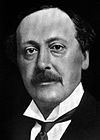
|
The Rt. Hon. The Viscount Gladstone (1854–1930) |
31 May 1910 | 8 September 1914 | 4 years, 100 days | George V | Botha |
| 2 | 
|
The Rt. Hon. The Earl of Buxton (1853–1934) |
8 September 1914 | 17 November 1920 | 6 years, 70 days | George V | Botha Smuts |
| 3 | 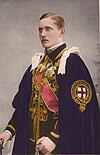
|
HRH Prince Arthur of Connaught (1883–1938) |
17 November 1920 | 21 January 1924 | 3 years, 65 days | George V | Smuts |
| 4 | 
|
The Rt. Hon. The Earl of Athlone (1874–1957) |
21 January 1924 | 26 January 1931 | 7 years, 5 days | George V | Smuts Hertzog |
| 5 | 
|
The Rt. Hon. The Earl of Clarendon (1877–1955) |
26 January 1931 | 5 April 1937 | 6 years, 69 days | George V Edward VIII George VI |
Hertzog |
| 6 | 
|
Sir Patrick Duncan (1870–1943) |
5 April 1937 | 17 July 1943 (died in office) |
6 years, 103 days | George VI | Hertzog Smuts |
| — | 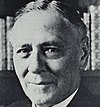
|
Nicolaas Jacobus de Wet (1873–1960) |
17 July 1943 | 1 January 1946 | 2 years, 168 days | George VI | Smuts |
| 7 | 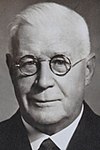
|
Gideon Brand van Zyl (1873–1956) |
1 January 1946 | 1 January 1951 | 5 years | George VI | Smuts Malan |
| 8 | 
|
Ernest George Jansen (1881–1959) |
1 January 1951 | 25 November 1959 (died in office) |
8 years, 328 days | George VI Elizabeth II |
Malan Strijdom Verwoerd |
| — | 
|
Lucas Cornelius Steyn (1903–1976) |
25 November 1959 | 11 December 1959 | 16 days | Elizabeth II | Verwoerd |
| 9 | 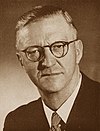
|
Charles Robberts Swart (1894–1982) |
11 December 1959 | 30 April 1961 (resigned) |
1 year, 140 days | Elizabeth II | Verwoerd |
| — | 
|
Lucas Cornelius Steyn (1903–1976) |
30 April 1961 | 31 May 1961 | 31 days | Elizabeth II | Verwoerd |
Ceremonial State President of South Africa (1961–1984)
[edit]Under the 1961 Constitution, the first constitution of the Republic of South Africa, the State President replaced the Monarch as ceremonial head of state. The State President was elected by Parliament for a seven-year term. In the event of a vacancy the President of the Senate served as Acting State President.
- Status
| No. | Portrait | Name (Birth–Death) |
Elected | Term of office | Political party | Prime Minister | ||
|---|---|---|---|---|---|---|---|---|
| Took office | Left office | Time in office | ||||||
| 10 | 
|
Charles Robberts Swart (1894–1982) |
1961 | 31 May 1961 | 1 June 1967 (resigned) |
6 years, 1 day | National Party | Verwoerd Vorster |

|
Theophilus Ebenhaezer Dönges (1898–1968) |
1967 | Did not take office because of illness | National Party | ||||
| — | 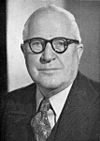
|
Jozua François Naudé (1889–1969) |
— | 1 June 1967 | 10 April 1968 | 314 days | National Party | Vorster |
| 11 | 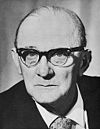
|
Jacobus Johannes Fouché (1898–1980) |
1968 | 10 April 1968 | 9 April 1975 | 6 years, 364 days | National Party | Vorster |
| — | 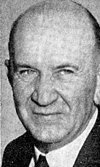
|
Johannes de Klerk (1903–1979) |
— | 9 April 1975 | 19 April 1975 | 10 days | National Party | Vorster |
| 12 | 
|
Nicolaas Johannes Diederichs (1903–1978) |
1975 | 19 April 1975 | 21 August 1978 (died in office) |
3 years, 124 days | National Party | Vorster |
| — | 
|
Marais Viljoen (1915–2007) |
— | 21 August 1978 | 10 October 1978 | 50 days | National Party | Vorster Botha |
| 13 | 
|
Balthazar Johannes Vorster (1915–1983) |
1978 | 10 October 1978 | 4 June 1979 (resigned) |
237 days | National Party | Botha |
| 14 | 
|
Marais Viljoen (1915–2007) |
— | 4 June 1979 | 19 June 1979 | 15 days | National Party | Botha |
| 1979 | 19 June 1979 | 3 September 1984 | 5 years, 76 days | |||||
Executive State President of South Africa (1984–1994)
[edit]Under the 1983 Constitution the State President was head of both state and government. The State President was elected by an electoral college chosen by Parliament and served until the next general election, but was eligible for re-election. In the event of a vacancy the Cabinet would nominate a member to serve as Acting State President.
- Status
| No. | Portrait | Name (Birth–Death) |
Elected | Term of office | Political party | ||
|---|---|---|---|---|---|---|---|
| Took office | Left office | Time in office | |||||
| 15 | 
|
Pieter Willem Botha (1916–2006) |
— | 3 September 1984 | 14 September 1984 | 11 days | National Party |
| 1984 | 14 September 1984 | 14 August 1989 (resigned) |
4 years, 334 days | ||||
| — | 
|
Jan Christiaan Heunis (1927–2006) |
— | 19 January 1989 | 15 March 1989 | 55 days | National Party |
| 16 | 
|
Frederik Willem de Klerk (1936–2021) |
— | 14 August 1989 | 20 September 1989 | 37 days | National Party |
| 1989 | 20 September 1989 | 10 May 1994 | 5 years, 56 days | ||||
President of South Africa (1994–present)
[edit]Under the Interim Constitution and the current Constitution the president of South Africa is head of both state and government. The president is elected by the National Assembly and serves a term that expires at the next general election; a president may serve a maximum of two terms. In the event of a vacancy the deputy president serves as acting president.
| No. | Portrait | Name (Birth–Death) |
Elected | Term of office | Political party | ||
|---|---|---|---|---|---|---|---|
| Took office | Left office | Time in office | |||||
| 17 | 
|
Nelson Mandela (1918–2013) |
1994 | 10 May 1994 | 14 June 1999 | 5 years, 35 days | African National Congress |
| 18 | 
|
Thabo Mbeki (born 1942) |
1999 2004 |
14 June 1999 | 24 September 2008 (resigned) |
9 years, 102 days | African National Congress |
| — | 
|
Ivy Matsepe-Casaburri (1937–2009) |
— | 25 September 2008[1] | 14 hours | African National Congress | |
| 19 | 
|
Kgalema Motlanthe (born 1949) |
2008 | 25 September 2008 | 9 May 2009 | 226 days | African National Congress |
| 20 | 
|
Jacob Zuma (born 1942) |
2009 2014 |
9 May 2009 | 14 February 2018 (resigned) |
8 years, 281 days | African National Congress |
| 21 | 
|
Cyril Ramaphosa (born 1952) |
— | 14 February 2018 | 15 February 2018 | 1 day | African National Congress |
| 2018 2019 2024 |
15 February 2018 | Incumbent | 6 years, 281 days | ||||
Timeline since 1961
[edit]
Standards
[edit]-
Governor-General's Standard (1910–1931)
-
Governor-General's Standard (1931–1952)
-
Governor-General's Standard (1952–1961)
-
State Presidential Standard (1961–1984)
-
State Presidential Standard (1984–1994)
References
[edit]- ^ Chikane, Frank (28 April 2012). "Emotional farewell as Mbeki holds last cabinet meeting". Daily Nation. Retrieved 26 August 2016.





